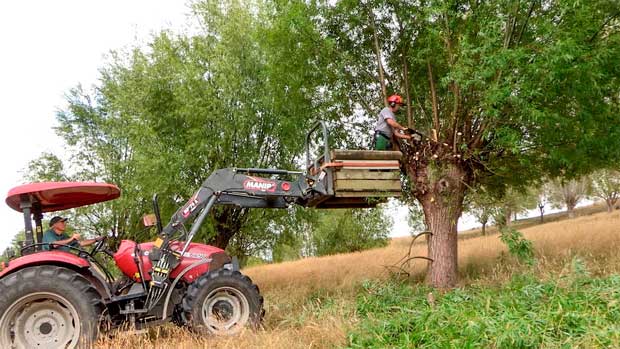Second video series released
Posted on March 28, 2017

A second series of how-to videos looking at poplar pruning willow pollarding has been released by the New Zealand Poplar and Willow Research Trust.
The videos are available on www.poplarandwillow.org.nz. A frequently-asked-questions tab (FAQs) has been set up on the website alongside the videos. The videos are generic so they can be applicable to farmers anywhere in the country, says the Trust’s general manager Ian McIvor.
“We hope regional councils, nurseries and farmers will share the video links to help pass on the knowledge.”
The footage was shot in Hawke's Bay and presented by Hawke's Bay Regional Council land management advisor Peter Manson.
The first two videos are about form pruning poplars, particularly with respect to double leaders, and high pruning poplars.
“A single stem tree is a healthy tree. It will live longer and stay intact,” Peter says. “Pruning allows for better pasture growth along the base of the tree and reducing stock camps there as well. It also leaves a straight stem that could one day be turned into a millable log.”
The high-pruning video also advises on how to make clean cuts and how much green crown to leave.
The video concentrating on pollarding willows from a ladder is fronted by Wairoa farmer Dave Read. He has been pollarding willows on Waiau Station for 15 years for fodder in droughts, erosion control and shade.
In the fourth video, experienced farm forester Trevor Ennor and his father Rob Ennor from Ranui Farm Park in Central Hawke's Bay demonstrate how they pollard their willows from a tractor- mounted box platform. The two pollarding approaches provide options for pollarding willows growing on flat land, gentle slopes or steeper slopes.
Safety first is a big message, especially with heights and chainsaws involved.
“Be methodical and steady. The key message is not to rush,” Peter says.
The first three videos in the Hill Country Heroes series looked at assessing sites, pole choice and successful pole planting. Poplar and willow poles are delivered to farms around the country from June to August with most planted before the end of August.
The Poplar and Willow Research Trust thanks Beef + Lamb NZ and Dairy NZ for their support with the production of the videos.